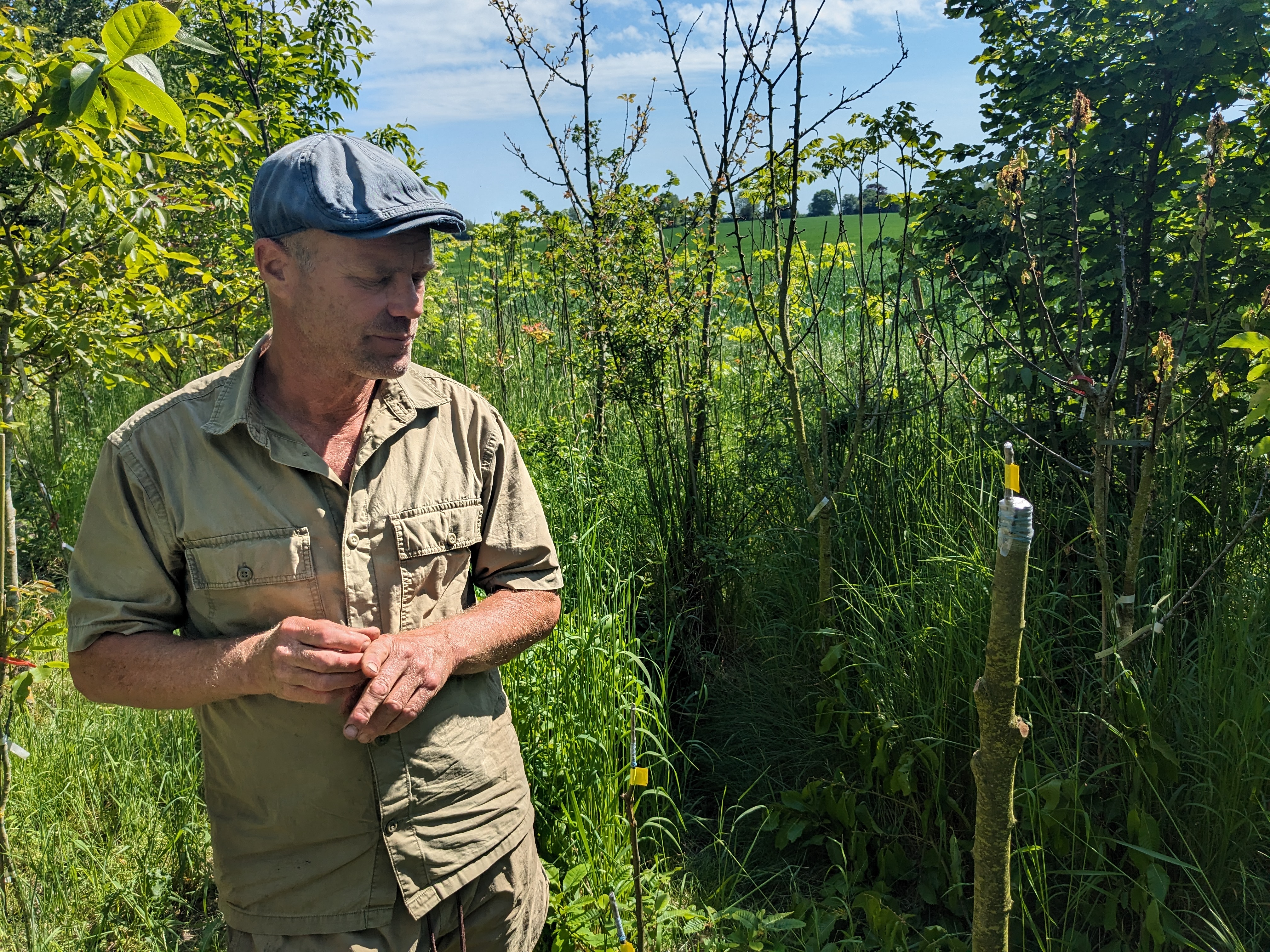Come What May
We live in a time of slow and inevitable collapse, as the most excellent blogger Chris eloquently describes from his small-farm, small-business perspective from the other side of the planet. We have been overloading the planet for fifty years and the ecosystems start to unravel. At the same time we run out of the resources upon which we have developed an addiction.
This week I was in our capital, visiting the premier researchers on sustainability science. Some of the smartest people in the world working on understanding the interconnectedness and what we should do to transform society. They dispair. One young PhD student told me that she would like to live within planetary boundaries, but if she did not participate in the international conference scene, she would not get a researchers' position anywhere. She felt that even the discipline of sustainability science is built on the same edifice as our crumbling civilization. Another told me that the research seemed a bit pointless. From a zoom-out perspective, we have all the facts to act now. We don't need another decimal to the collapse of the Greenland ice sheet. Politics could act now, or could have acted decades ago, if science were the bottleneck. The light and modern and elegant office environment was a stark contrast to the dark realities with which these young people wrestle. The older researchers seemed more laconic and assimilated into the university bureaucrazy. I think that no revolution will start here. But I secretly hope that I am wrong.
We talked about simple things that have worked in the past. We have changed the societal attitude towards smoking during my lifetime. By consistent messaging from the official society and by blocking advertising. We could do the same for flying, but we don't.
If our political leadership took this serious, they would start weekly press-conferences, announcing restrictions, just like in the pandemic times of the past couple of years. No additional science needed.
I cannot make anyone else want something, so come what may.
Hoopla!
Back on the farm, we have had amazing developments. Thanks to the intern Jane and that I now only work one day a week in the off-farm office job, we have been able to put a lot of infrastructure in place.
We built the second hoop-house:
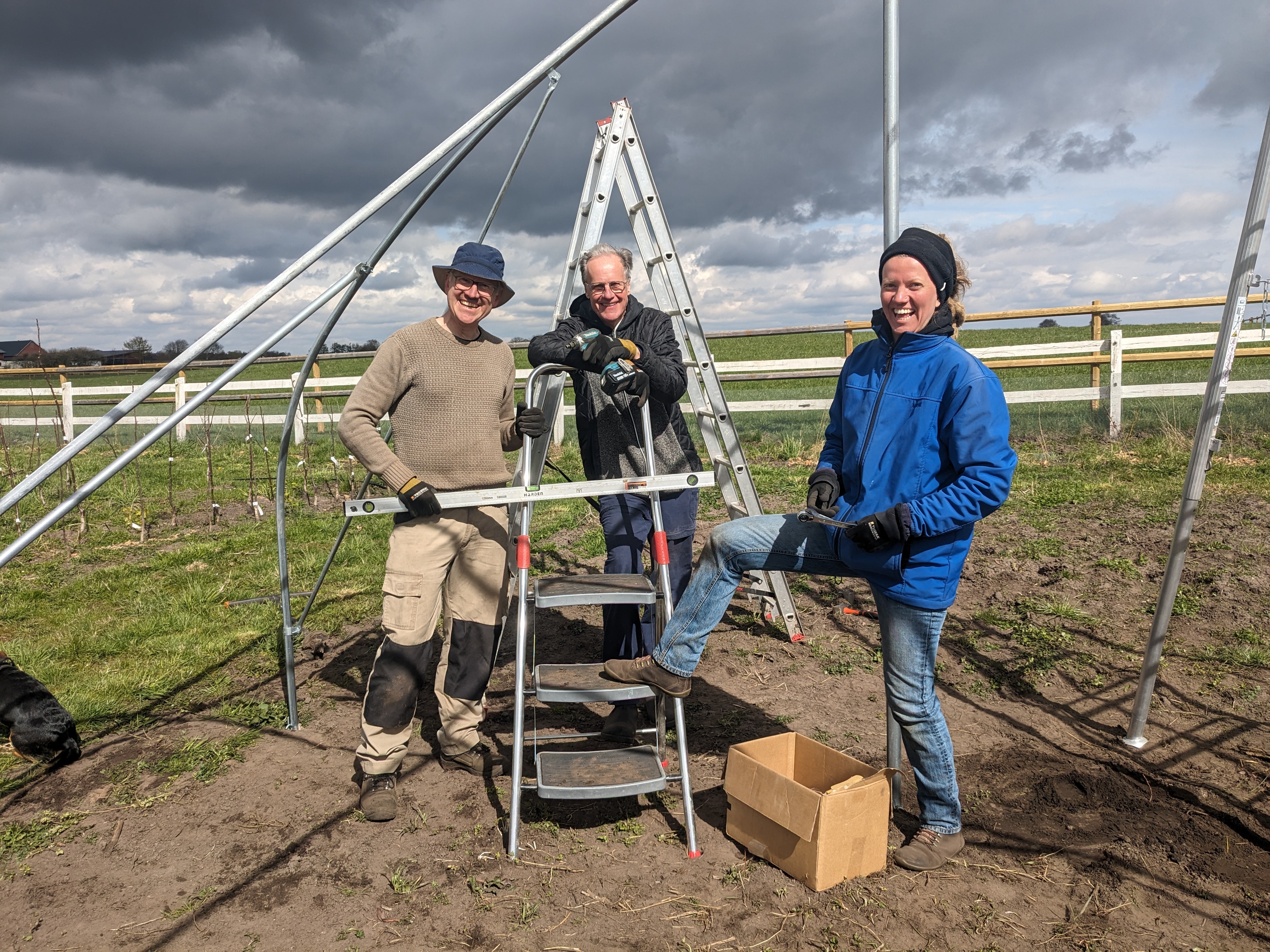 Uncle Bosse helped to raise the second hoop house.
Uncle Bosse helped to raise the second hoop house.
 Jonatan spent a week with us, and helped to attach the UV-stabilized polyethylene skin.
Jonatan spent a week with us, and helped to attach the UV-stabilized polyethylene skin.
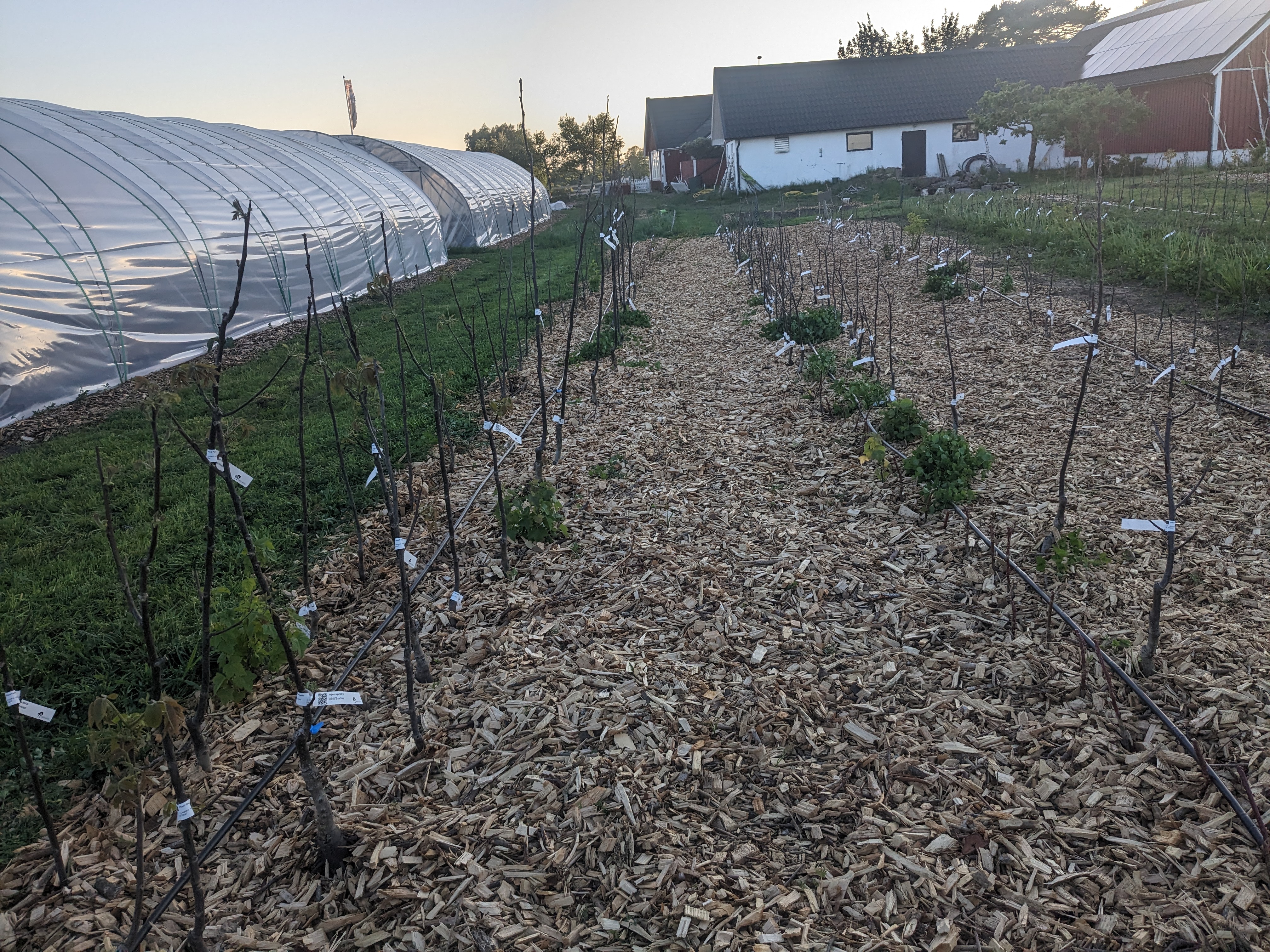 The two hoop houses are in line and you also see some of the wood chips that have been spread out.
The two hoop houses are in line and you also see some of the wood chips that have been spread out.
Walhalla - something with walnuts?
This year we have been sowing walnuts for the first time. We collected 30 kg of nuts in a nearby town, and saved something like 7kg over winter to sow. We kept them in moist sand in a fridge in a garage, with a thermostat setting of 0-1 centigrades, just above freezing. What I had not anticipated was that the temperature in the garage dropped to -20C and inside the fridge, the minimum temperature was around -10C. The walnuts survived fine, but approx. 80% of the chestnut seeds froze to death... Next year in a different place. Or a supplementary heater inside the fridge.
Anyways, we have sown walnuts both in air-pruning beds and in the ground in the new hoop-house.
 The walnut trees that were seeded in April are now shooting out of the ground.
The walnut trees that were seeded in April are now shooting out of the ground.
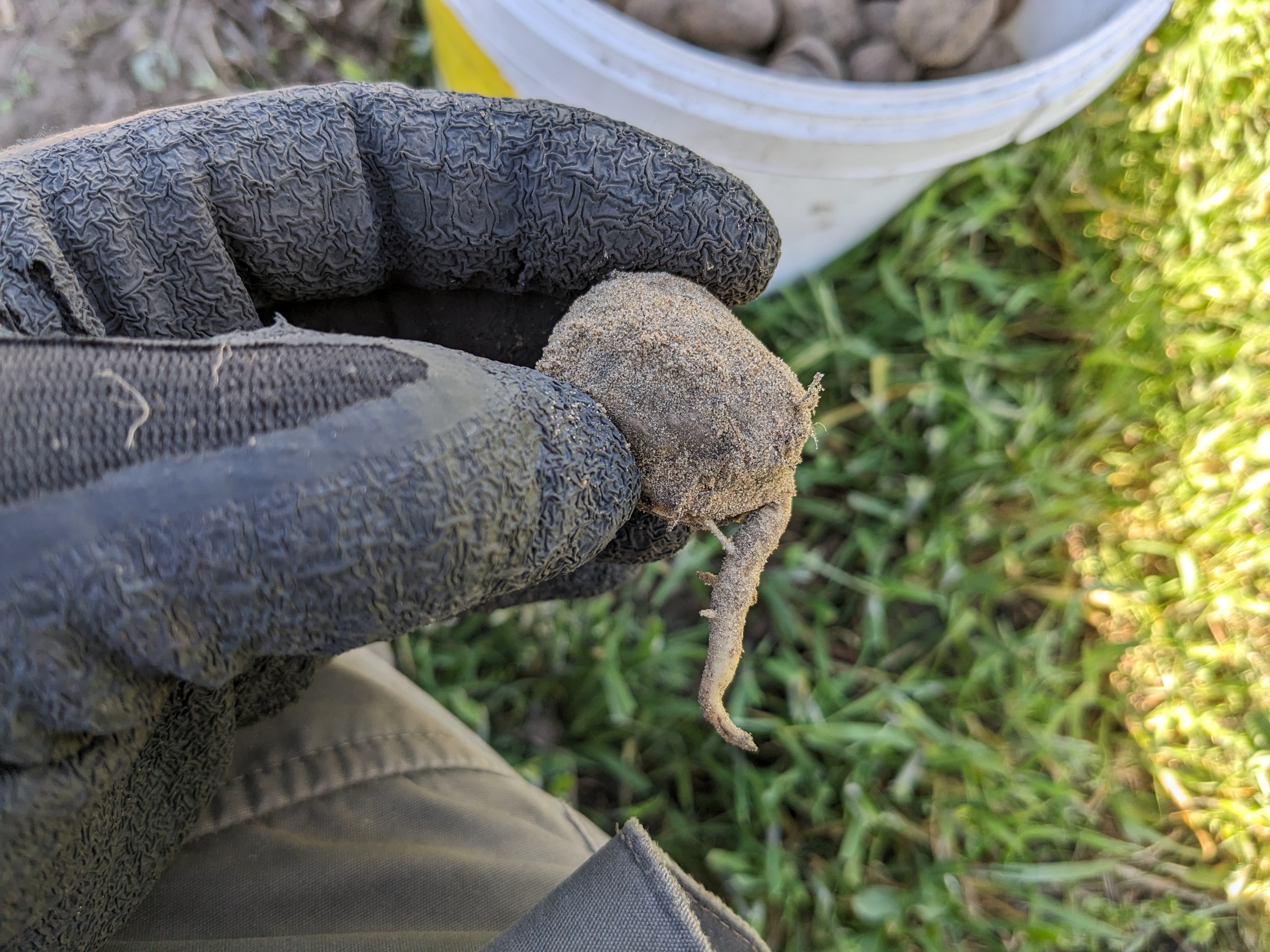 Some seeds start to sprout in the sand. What comes first is a rootlet, and is planted vertically downwards.
Some seeds start to sprout in the sand. What comes first is a rootlet, and is planted vertically downwards.
 They are full of life, these walnuts, after six months in moist, cool sand. I take them out of cooling a few days before planting.
They are full of life, these walnuts, after six months in moist, cool sand. I take them out of cooling a few days before planting.
We had a few small trees of walnut rootstock that I got from my friend Jan. We grafted delicious varieties onto those in April and after three weeks we could take them out of the hot-pipe and planted them in the field. The purple color comes from a grafting wax that helps to keep moisture in the scion during the hotpipe sejour.
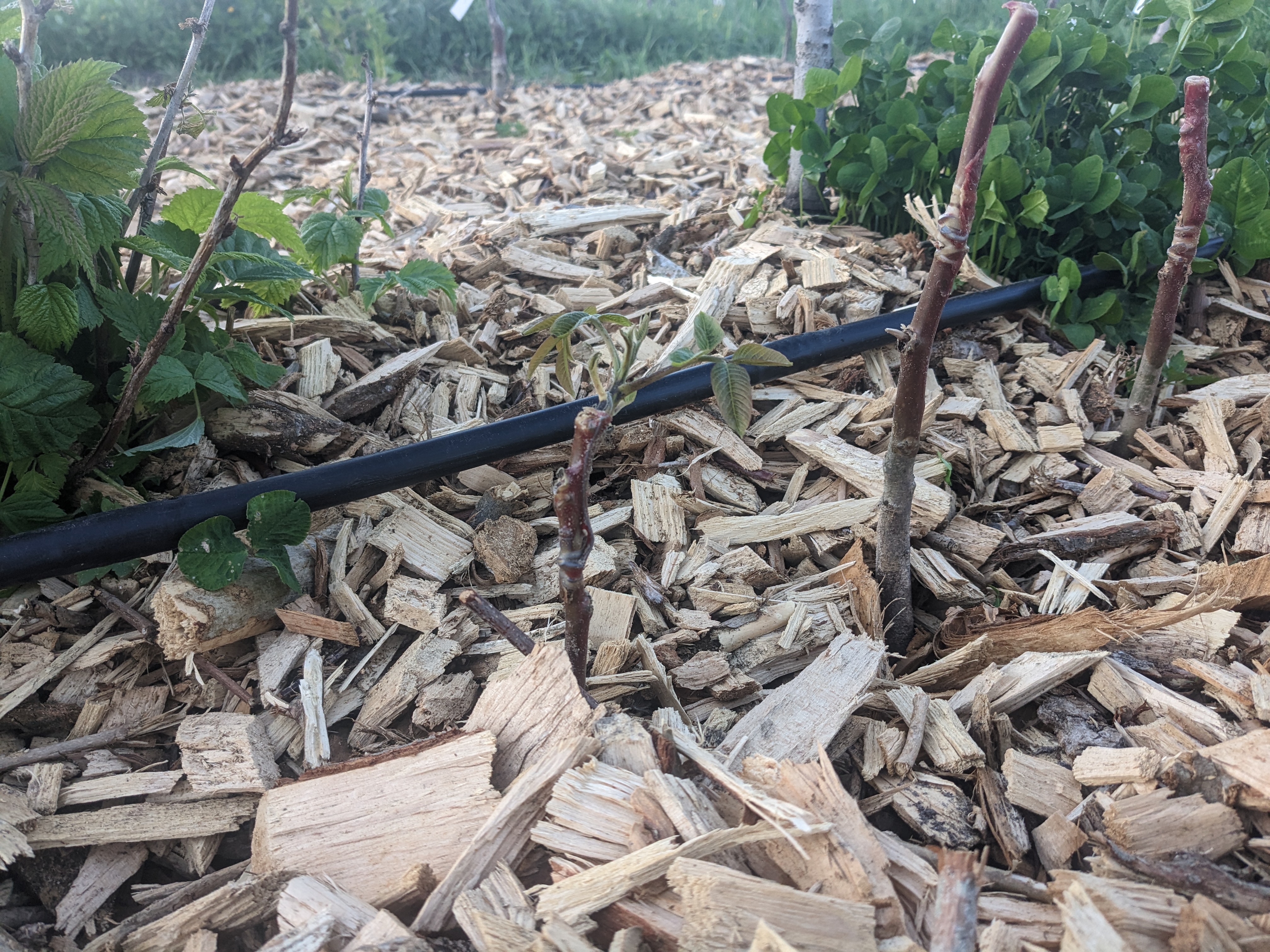 If you look with a sharp eye, you will notice a green shoot coming out of one of these purple sticks.
If you look with a sharp eye, you will notice a green shoot coming out of one of these purple sticks.
Water is life
We continued building infrastructure for rainwater and for the dug well that we use for irrigation. Last year in June, we overloaded the pump by running hot when the well was sucked dry. Now we have installed an electric sensor system that turns off the pump if the water level goes below a certain limit. We tried to suck the well dry, but the groundwater level is fortunately now so high that the influx was larger than the pump capacity. Therefore don't yet know if the sensor system works. I am almost sure it will work, but since I have not been able to test it, there may be something I have overlooked.
We have had no rain for four weeks and +25C weather and dry Eastern wind, so the ground water table is dropping. On the one hand, I want rain, but on the other, I would like to see how the sensor in the well works. Come what may...
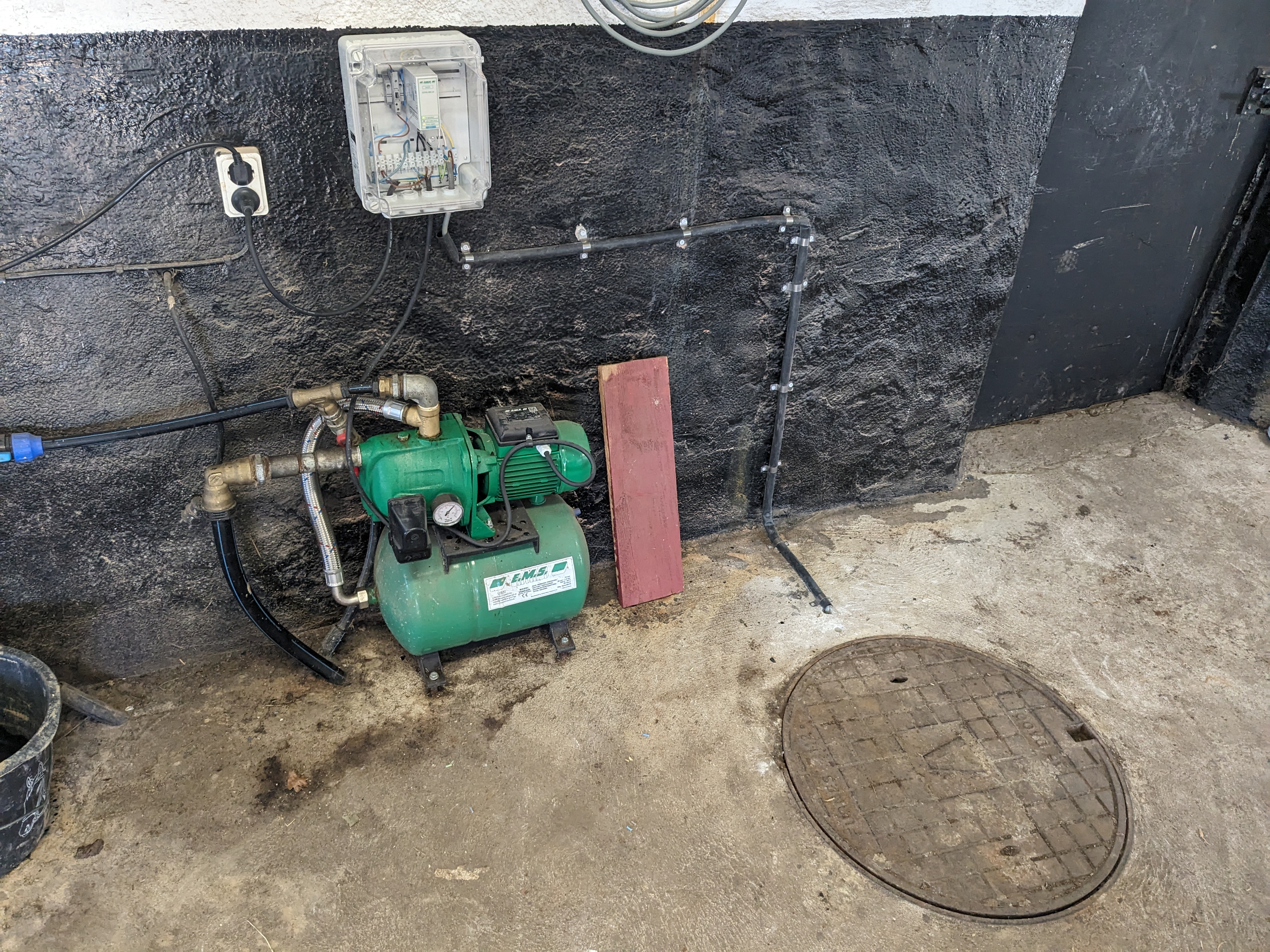 The wall mounted white box contains the logic and the relay for the green hydrophore pump.
The wall mounted white box contains the logic and the relay for the green hydrophore pump.
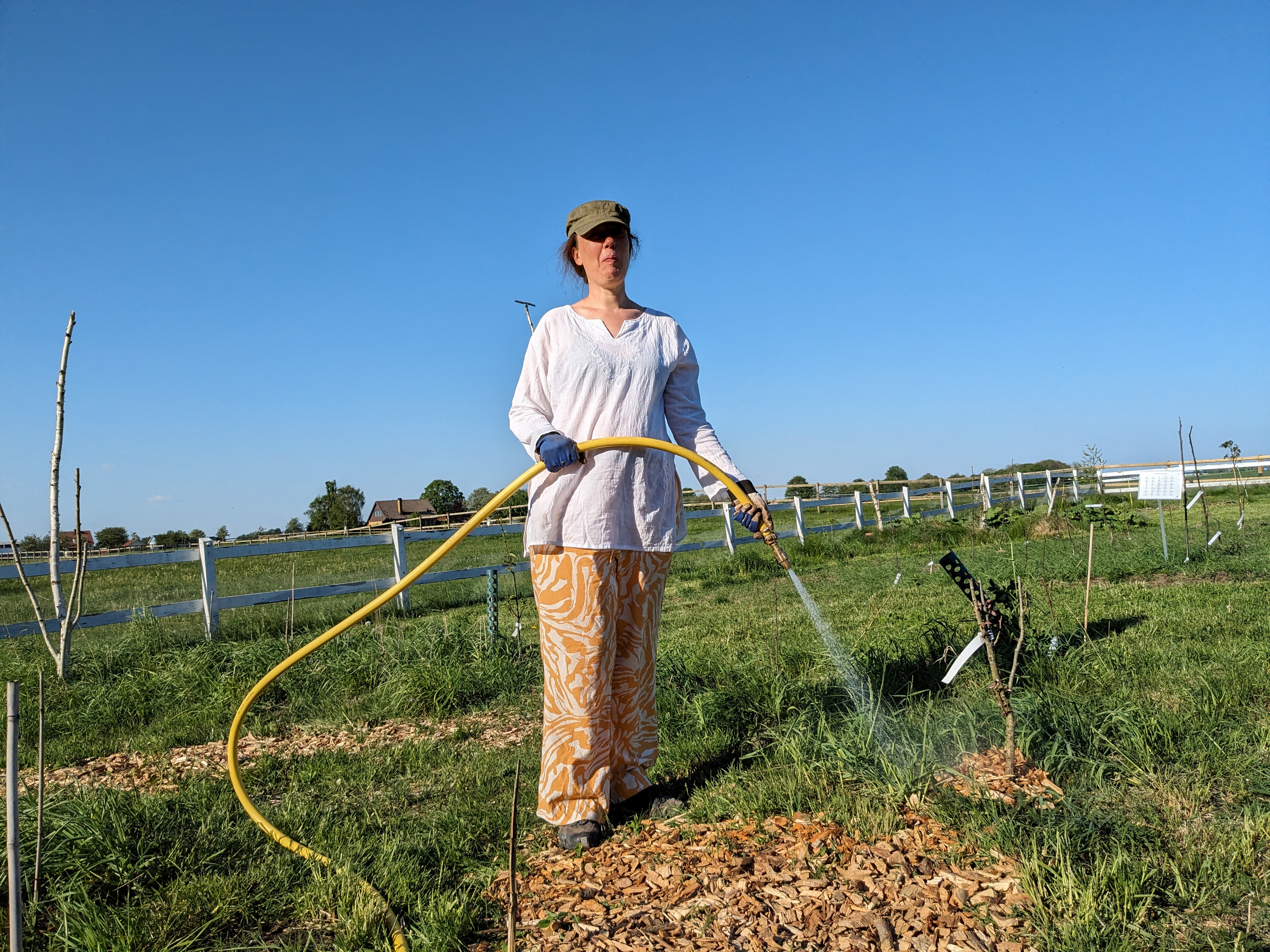 We have now 600 meters of drip irrigation, but some parts of our gardens we still need to water with hoses.
We have now 600 meters of drip irrigation, but some parts of our gardens we still need to water with hoses.
 To the left you see apples, and a row of lying rootstock apple trees to propagate A2 and B9 rootstock. And drip.
To the left you see apples, and a row of lying rootstock apple trees to propagate A2 and B9 rootstock. And drip.
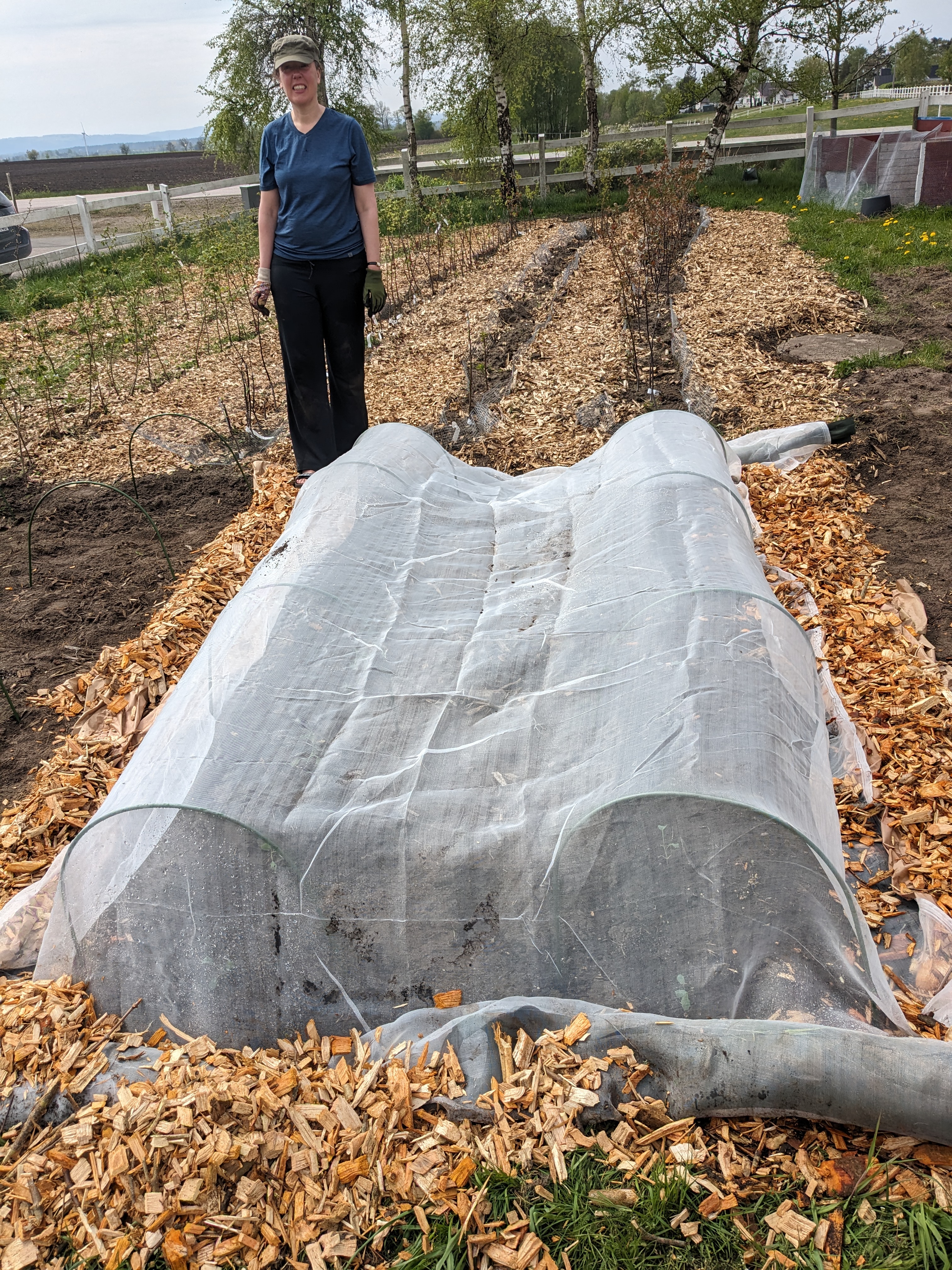 This year we pre-emptively cover the kale to see if we can reduce moth/caterpillar damage.
This year we pre-emptively cover the kale to see if we can reduce moth/caterpillar damage.
Denmark - Scandinavia's kingdom of nuts
There used to be a vibrant nut growing tradition all over Scandinavia, but the commercial growers in Sweden all closed down after WWII. It was so much cheaper to just import from Italy and Turkey. In Denmark, there are still a few operational orchards left, from 1900s. And during the last 5 years more than 200 hectares have been planted to new orchards. Sweden is far behind in this development, so we went to the Danish island of Fyn to visit some nut growers and the best nut tree nursery of the Nordic countries.



